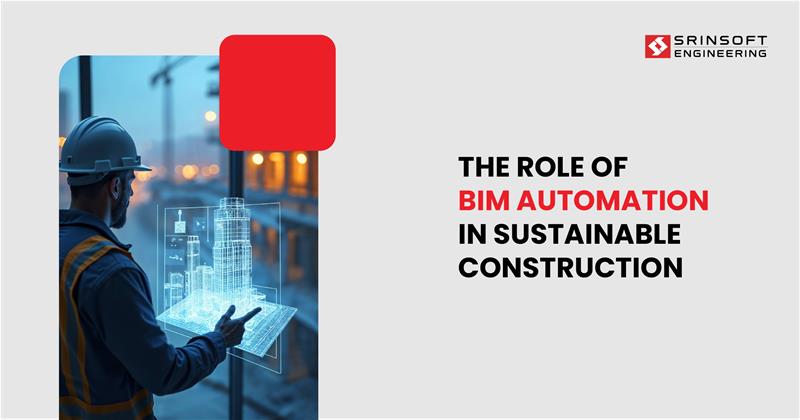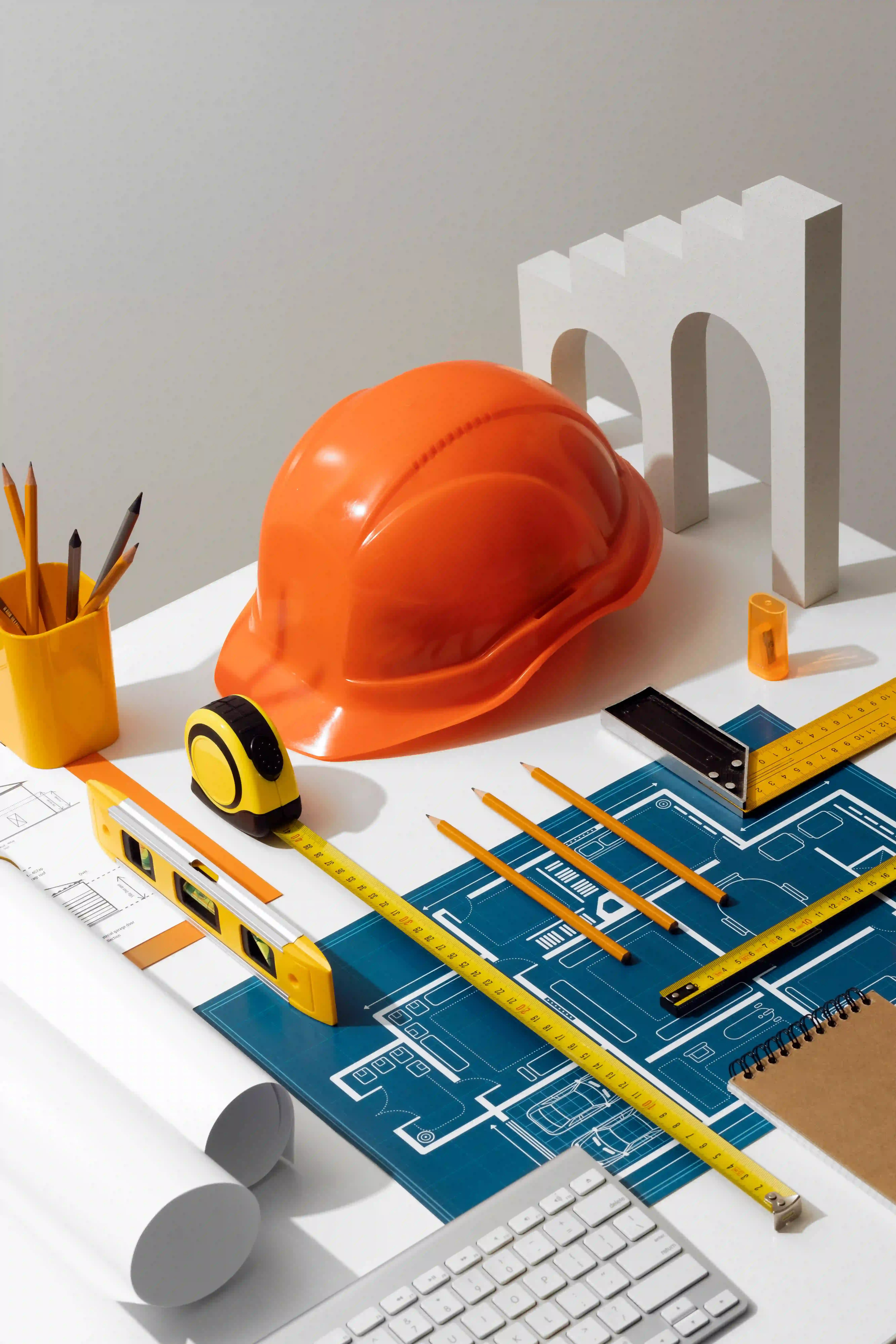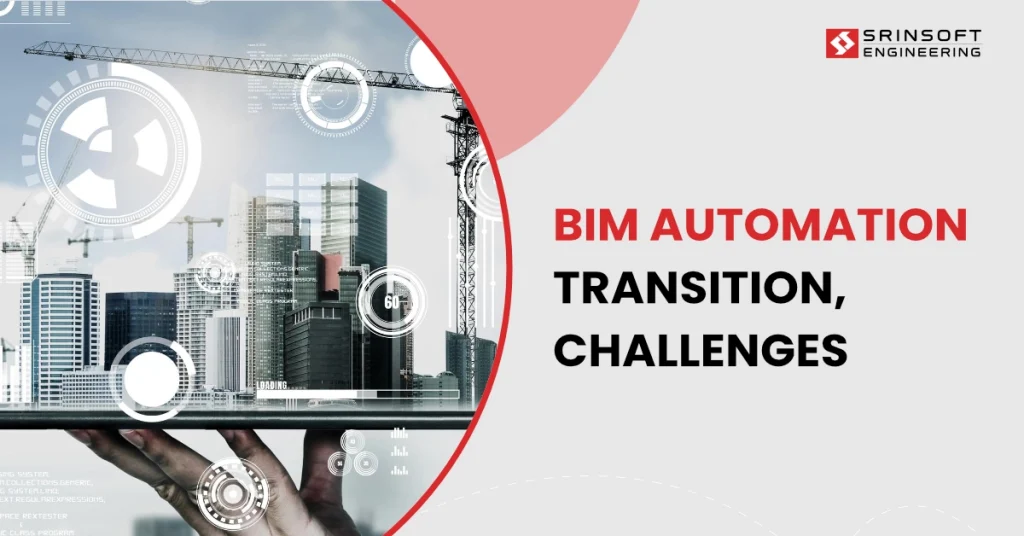
The global construction industry has experienced a fundamental transformation towards sustainable practices because of its major contributions to environmental problems. The construction industry’s conventional methods lead to extreme energy use while depleting resources and mismanaging waste, resulting in a substantial carbon footprint.
The construction industry stands as a major climate change driver by being responsible for more than 36% of worldwide energy use and 39% of carbon output according to industry analyses.
Modern architecture now integrates sustainable building design as a fundamental element to address environmental concerns and climate change by cutting energy consumption and carbon emissions through increased public awareness. Sustainable construction which might be called “Green Building” emerges as a practical solution through its ability to reduce environmental impact while boosting energy efficiency.
By leveraging BIM Automation in sustainable construction, organizations can design buildings in an environmentally friendly way and use sustainable materials to reduce their negative environmental impact. This blog explores how construction organizations can improve building designs with BIM automation and promote sustainable practices throughout the building project lifecycle.
Understanding How BIM Revolutionizing the Construction Planning
BIM (Building Information Modeling) is revolutionizing the way of project planning for the construction industry by adopting advanced technologies and becoming an essential tool for sustainable construction projects.
Here’s more detailed information on how BIM Revolutionizing Construction Planning –
1. Improved Productivity:
BIM provides detailed and accurate information about the construction project, including bill of materials, cost estimates, and schedules
2. Accurate Visualization:
BIM models offer detailed 3D visualization, allowing construction organizations to understand the complex designs and meet the industry standards and sustainable regulations
3. Federated Models:
BIM integrates the design data from various disciplines into a single model, facilitating better coordination and collaboration among project stakeholders
4. Rich Data Repository:
BIM models contain detailed information, including databases, parameters, notes, documentation and so on. BIM Data can be categorized into three types
- Geometric Data – This includes physical dimensions, spatial relationships, orientation of building objects
- Documentation Data – This includes construction methodologies, design intent documents, instructions, regulatory compliance information and so on
- Non-Geometric Data – This includes cost information, maintenance schedule, performance requirements, and building object specifications
5. Informed Bidding:
BIM’s detailed insights allow contractors to prepare accurate bids with competence, increasing their chances of winning contracts and ensure profitability.
6. Clash Detection:
BIM identifies clashes between disciplines such as structural, architectural, electrical, mechanical plumbing, etc., allowing them to make necessary adjustments before construction begins.
Role of BIM Automation in Sustainable Construction
BIM Automation has a comprehensive role to play in the execution of sustainable building designs. It helps in visualizing and analysing various environmental impacts, considering construction design standards and best practices.
BIM Automation tool helps architecture, engineering, and construction professionals to design construction projects with optimized energy consumption and reduced waste & environmental impacts.
Here is the list of BIM automation roles in sustainable construction –
1. Enhanced Design Analysis
With the help of advanced algorithms, BIM automation tools enable designers to simplify complex design processes by analysing construction requirements. This automation streamlines the evaluation of 3D models for structural integrity and compliance with industry standards through integration with analysis software.
BIM automation generates detailed analysis reports, helping designers determine material lists and project schedules that align with their requirements. Based on these reports, automation tools can automatically generate multiple design options and present design data for better decision-making by extracting and organizing data from models.
The outcome of BIM automation significantly helps construction projects in optimized space utilization and minimized environmental impact, delivering sustainable results
2. Energy Requirement Assessment
By Integrating advanced simulation tools with BIM Automation, construction organizations can easily assess the energy requirement for the building project and define the complete roadmap of energy consumption and power utilization.
BIM Automation simulates and proposes future-demand energy consumption by considering building objects and resources. This delivers energy-efficient building designs, maintaining the principles of sustainable construction with cohesive plans.
3. Building Life Cycle Analysis
BIM Automation facilitates engineers’ performing a detailed assessment of the building design for structural integrity, futuristic energy requirements, emission levels, and construction material impacts throughout the project lifecycle.
With the automation of life cycle analysis, the construction organization can execute effective project planning, aligning with the environmental and ecological balances throughout the project lifecycle.
4. Enriched Resource Utilization
BIM Automation utilizes construction design principles and best practices to automate repetitive tasks in design workflows, such as model creation, parameter detailing, model documentation, clash detection, and quality analysis.
This results in more efficient resource utilization, leading to better control of project resources and allowing greater focus on complex design outcomes.
5. Carbon Footprint Reduction
BIM Automation plays a vital role in reducing the carbon footprint of construction projects by following construction design principles and best practices. This includes the dynamic updating of material requirements for the construction project based on future dependencies
By adopting data-driven design modelling and integrating simulation and analysis tools with BIM Automation, it provides precise materials selections and their cost estimates, considering the efficient energy usage and lesser environmental impacts
6. Sustainable Building Operations
BIM software and automation tools play a crucial role in developing design structures and information models for buildings, ensuring the effective implementation of sustainable operations while mitigating major construction failures and breakdowns.
These automation tools enable project teams to strategically plan and streamline work processes, optimizing functional planning and task management to enhance operational control and reduce maintenance costs. This is achieved by simulating building systems early in the construction phase through BIM-based planning, facilitating sustainable building operations.
7. Sustainable Reconstruction
BIM Automation facilitates engineers to digitalize the old building through modernized tools like point cloud. Automation tools automatically identify structural weaknesses, outdated systems, and functional threats during the digitalization of old buildings, Based on the results of automation tools, designers can accomplish sustainable building designs, considering various possibilities for optimum building performance and high-end security.
During the digitalization, the old buildings are designed with energy-efficient HVAC systems, power equipment, and water supply systems, maintaining the industry standards and safety regulations.
8. Topography Analysis
By integrating GIS (Geographic Information System) technology with Automation tools, the different environmental factors like the topography of the land, weather patterns, and the natural ecosystems can be thoroughly assessed, complying with the local standards and regulations
This enables designers and engineers to identify any possible environmental risks, ensuring an efficient way of building designs toward ecological resilience. BIM Automation tools can adopt or modify the defined rules and conditions for the topography analysis, enabling better control of construction sites and surrounding landscapes.
Smart Construction with BIM Automation
Construction companies achieve smart construction with BIM automation through various techniques, including:
1. Automated Design Generation
BIM Automation offers a customised solution that automates the tiresome and repetitive design activities. It can adopt design modification by providing configurable rules and standards, allowing designers to maintain the overall sustainability of project criteria.
The automation tool helps to automate the design process by following the predefined rules while facilitating seamless model coordination without any manual interaction.
2. Data-Driven Decision Making
By leveraging artificial intelligence and advanced algorithm automation tools, organizations can make informed eco-friendly decisions using extensive data analysis. The Automation tool automatically gathers and processes the design data based on the predefined valuable insights offered by the organization.
3. Waste Reduction
BIM Automation facilitates optimized material selection and waste reduction through sustainable building techniques. BIM Automation allows for accurate material analysis by combining thorough databases with building regulations, therefore allowing project teams to assess and choose the most sustainable alternatives.
By automating the decision-making process towards materials, the building designs have a lower environmental impact. Moreover, BIM Automation enables sophisticated quantity take-off that allows designers to prepare a precise estimate of material needs.
4. Building Lifecycle Management
BIM Automation streamlines the building lifecycle by automating tasks across all phases, from design to construction, including model generation, clash detection, layout plan detailing, quantity take-off, and formatting inputs for fabrication.
By integrating the analysis tool, the automation can evaluate and modify the building design for sustainable outcomes, enhancing materials selection and improving energy efficiency. This automation process complies with building standards and regulations.
5. Achieving Green Building Certification
By automating the documentation and compliance checks needed for LEED or BREEAM certifications. BIM automation facilitates the process of accomplishing green building certifications by centralizing all project data in a single model and monitoring energy efficiency, material usage, water management, and other sustainability metrics required for the certification.
This process also enables real-time monitoring toward certification objectives, allowing designers to promptly highlight wrong spots and change strategy. By streamlining the verification of compliance, this automation guarantees that the project meets or exceeds certification standards and that sustainability levels are consistently maintained.
Conclusion
BIM Automation plays a transformative role in sustainable construction projects, offering a comprehensive approach to minimizing environmental impacts. BIM Automation can optimize energy efficiency, reduce carbon footprint, minimise waste generation, and utilize sustainable materials selections for sustainability improvements.
As the construction industry continues to prioritize environmental responsibility, the need for BIM Automation in the sustainable construction industry is promising, with further adoption of the advanced technologies set to enhance its role in promoting sustainable development throughout the building lifecycle

.png)

